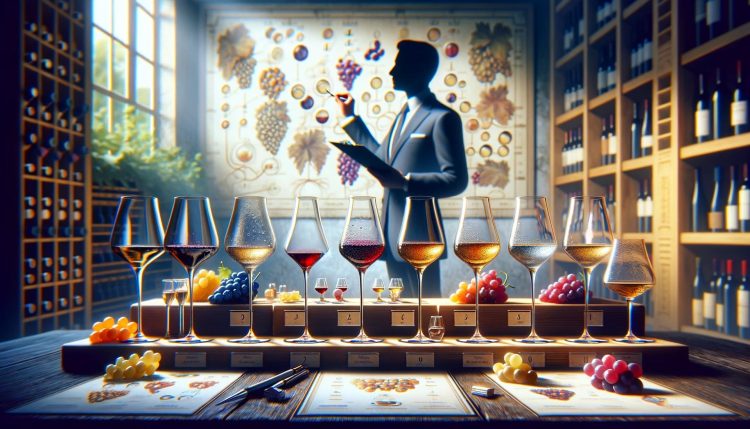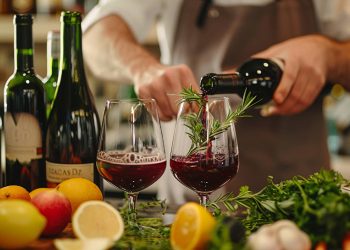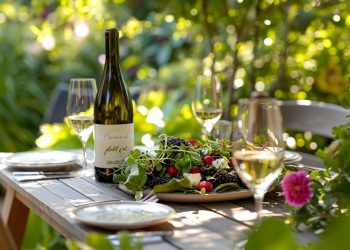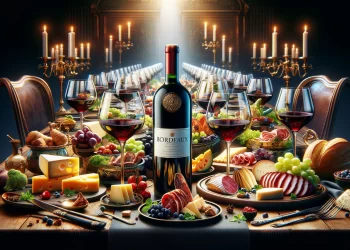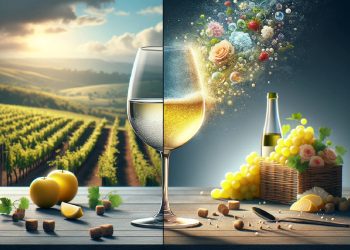What Is a Cepage? In the vast world of wine, there is a term that holds a significant role in understanding the composition and quality of a particular wine – cepage. But what exactly does this term mean? Why is it important in the realm of winemaking? And how does it contribute to the excellence of a wine? In this discussion, we will demystify the concept of cepage, exploring its meaning, significance, and the secrets it holds about grape varieties and the art of winemaking. Join us as we delve into the fascinating world of cepage and unlock eight secrets that lie behind the creation of exceptional wines.
Demystifying the Cepage: Its Meaning and Significance
The term ‘cépage’ goes beyond just referring to the grape variety used in winemaking. It carries nuances that encompass the historical context and usage in winemaking practices. Understanding the meaning and significance of cépage allows wine enthusiasts to appreciate the complexities and artistry behind the blending of different grape varieties to create exceptional wines.
Beyond Just “Grape Variety”: The Nuances of Cepage
Unveiling the intricacies of cépage, the meaning and significance of this term go beyond just identifying grape varieties in winemaking. Cépage encompasses the art of wine blending and the characteristics of wine grape varieties, as well as the influence of wine region grape types. Here are four key aspects that highlight the nuances of cépage:
- Wine blending: Cépage plays a crucial role in creating wine blends, allowing winemakers to enhance complexity and balance by combining different grape varieties.
- Wine labels: Cépage is often indicated on wine labels, providing consumers with information about the grape varieties used in the wine and its composition.
- Wine grape characteristics: Different grape varieties have distinct aromas, tastes, acidity levels, tannins, and body, influencing the flavor profile and overall quality of the wine.
- Wine region grape types: Cépage can vary between regions and countries, reflecting the terroir and cultural heritage of a specific wine region and resulting in diverse wine styles.
Understanding cépage is essential for wine enthusiasts and professionals, as it enhances their wine knowledge, tasting skills, and overall appreciation for the art of winemaking.
What Is a Cepage? Historical Context and Usage in Winemaking
Moving from the exploration of the intricacies of cépage in wine blending and grape characteristics, we now turn our attention to the historical context and practical usage of cépage in the art of winemaking. Understanding the historical context of cépage helps us appreciate its significance in winemaking techniques and vineyard grape selection. Winemakers have been using cépage for centuries to create wines with specific varietal wine profiles and to achieve desired qualities in their blends.
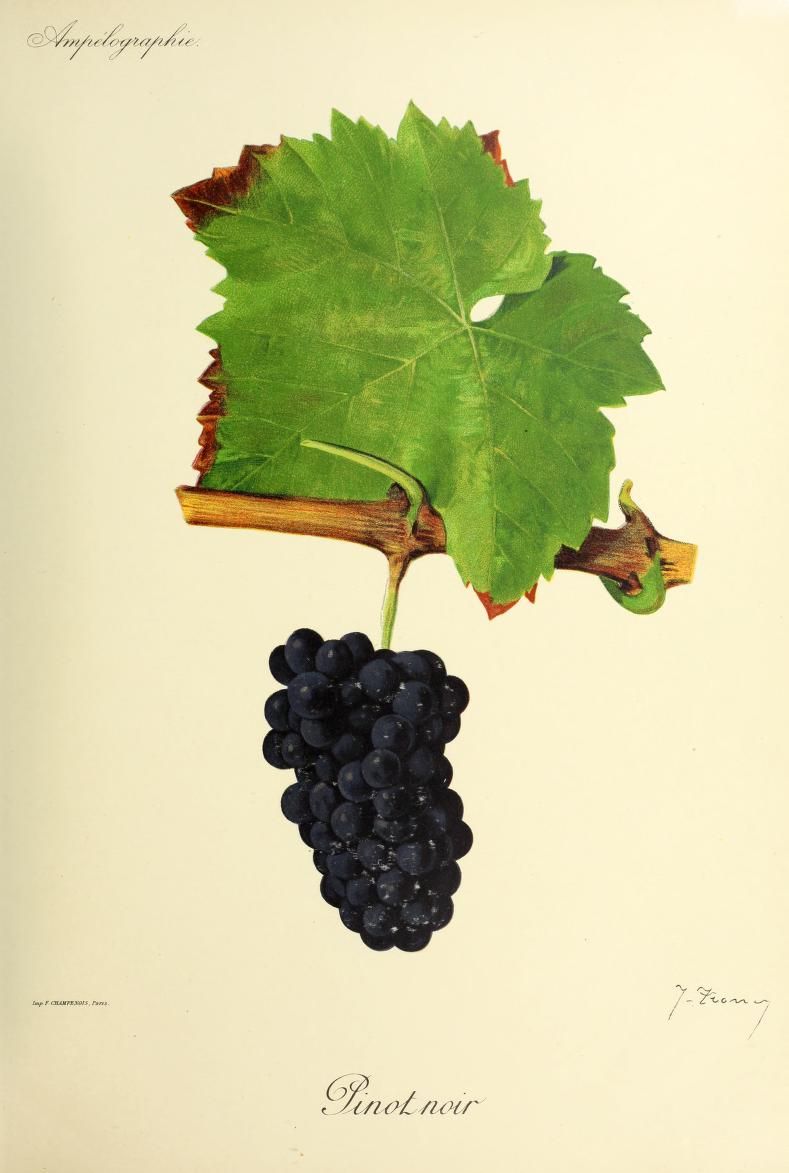
For example, Bordeaux blends, which include grape varieties like Cabernet Sauvignon and Merlot, have become renowned for their complexity and elegance. The careful selection and blending of these grape varieties have allowed winemakers to create balanced and flavorful wines that reflect the unique characteristics of their terroir. By understanding the historical context and practical usage of cépage, we can gain a deeper appreciation for the artistry and science behind winemaking.
| Historical Context | Practical Usage |
|---|---|
| Winemakers have been using cépage for centuries | Cépage is crucial in creating wine blends |
| Bordeaux blends have become renowned for their complexity and elegance | Winemakers carefully select cépage to achieve desired qualities in the wine |
| Cépage reflects the unique characteristics of terroir | Different grape varieties are vinified separately and blended later |
| Cépage has been adopted by wine-producing regions around the world | The cépage composition of a blend can be indicated on the label |
| Understanding cépage helps in wine tasting and appreciation | Blending different grape varieties enhances complexity and balance |
Why Does Cepage Matter? Exploring Its Impact on Wine
Cepage, or the grape varieties used in winemaking, plays a crucial role in shaping the flavor and style of wine. Understanding the impact of cepage allows wine enthusiasts and professionals to appreciate the complexity of blends and the distinct characteristics of single-varietal wines. By exploring the different grape combinations and their influence on the final product, one can gain a deeper appreciation for the artistry and craftsmanship behind winemaking.
Cepage as a Key Contributor to Flavor and Style
The choice of cépage plays a significant role in shaping the flavor and style of wine, making it a crucial factor in winemaking. Here are four reasons why cepage is important in the world of wine:
- Grape varietal wines: Cepage determines whether a wine is a varietal wine, made from a single grape variety, or a blended wine, made from a combination of grape varieties. This distinction affects the wine’s flavor profile and allows for a range of styles and expressions.
- Wine tasting notes: Cepage influences the aromas and flavors present in a wine. Different grape varieties have distinct characteristics, such as the fruity notes of a Cabernet Sauvignon or the floral aromas of a Riesling. Understanding the cepage can help wine enthusiasts identify and appreciate these nuances.
- Wine label information: Cepage is often indicated on wine labels, providing valuable information about the composition of the wine. This allows consumers to make informed choices and select wines that align with their preferences.
- Blending for balance: Winemakers use cepage to achieve balance in their wines. By blending different grape varieties, they can combine the strengths of each variety, such as the structure of Cabernet Sauvignon and the softness of Merlot. This creates a harmonious and well-rounded wine that appeals to a wide range of palates.
The choice of cepage is not just a technical consideration, but a creative and artistic decision that contributes to the overall quality and enjoyment of the wine.
Understanding Blends and Single-Varietal Wines through Cepage
As we continue our exploration of cepage and its impact on wine, let us now delve into the concept of understanding blends and single-varietal wines through cepage. Understanding wine composition is essential for wine enthusiasts who want to deepen their knowledge and appreciation of wine. French wine terms, like cepage, are crucial in deciphering the characteristics and flavors of different wines.
Whether you are a wine collector or simply a wine lover, grasping the basics of cepage can enhance your experience and guide your wine selections. It is interesting to compare the old world vs new world cepage, as different regions have their own unique approaches to blending grape varieties. By understanding cepage, you can unlock the secrets behind wine excellence and truly appreciate the artistry behind each bottle.
Beyond the Basics: 8 Secrets Revealed About Grape Varieties and Wine Excellence
As we explore the topic of grape varieties and wine excellence, it is important to go beyond the basics and uncover the secrets that lie within. In this article, we will reveal eight secrets about grape varieties and wine excellence that will enhance your understanding of cépage and its impact on wine. From exploring the diverse world of cépages to understanding the art of blending and the factors that contribute to quality in cépage selection, these secrets will provide valuable insights into the world of wine.
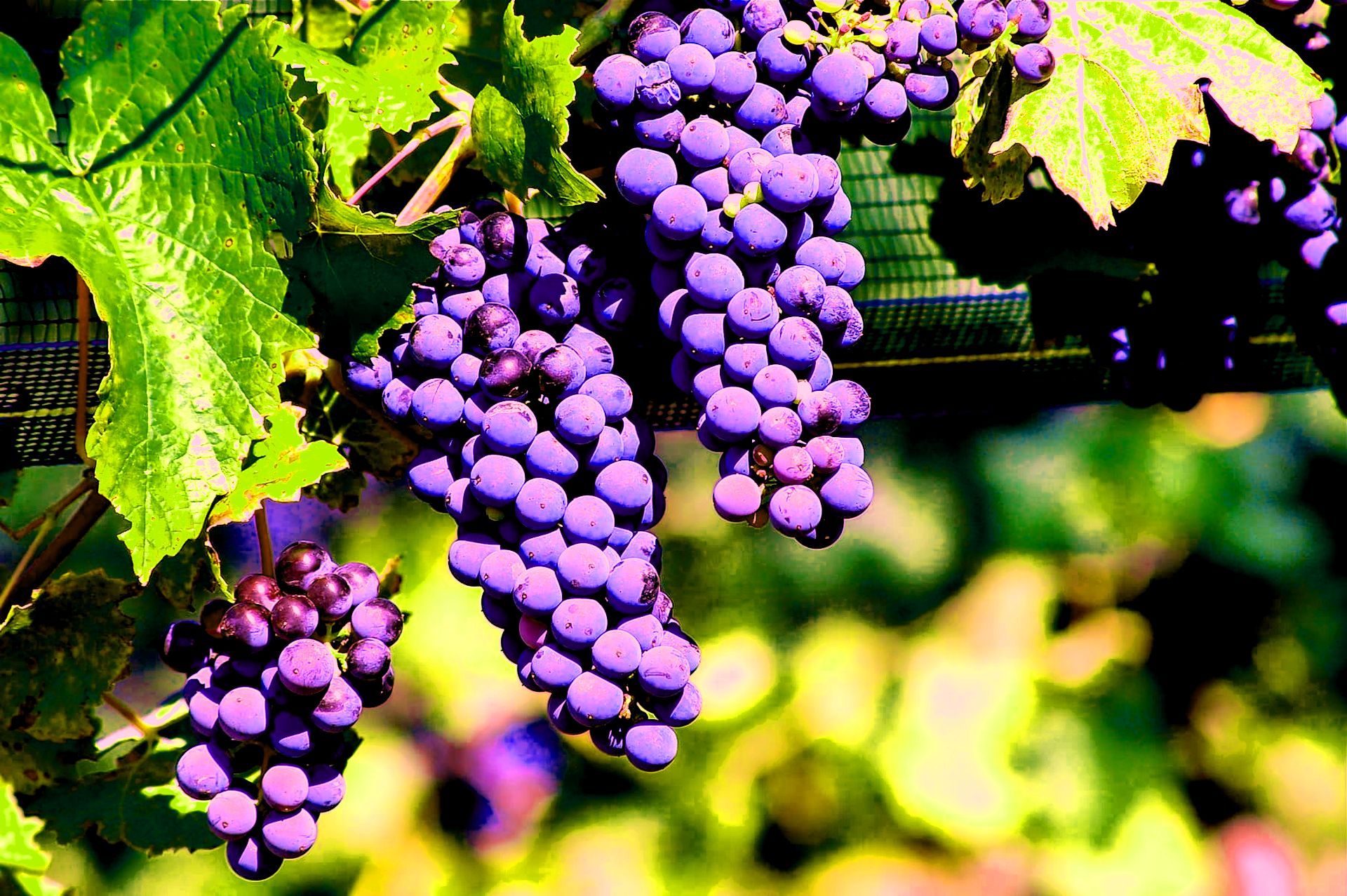
Secret #1: The Diverse World of Cepages: Exploring Common and Unique Varieties
The diverse world of cépages offers a fascinating exploration of both common and unique grape varieties. Understanding the characteristics of key red and white grape varieties is essential for appreciating the wide range of flavors and styles found in wines. From the bold and structured characteristics of Cabernet Sauvignon to the vibrant and crisp nature of Sauvignon Blanc, each cépage brings its own distinct qualities to the wine, creating a rich tapestry of flavors and experiences for wine enthusiasts to discover.
Key Red Grape Varieties and Their Characteristics
Red grape varieties play a pivotal role in the world of cépages, offering a diverse range of flavors and characteristics that contribute to the excellence and uniqueness of wines. Some key red grape varieties and their characteristics include:
- Cabernet Sauvignon: Known for its boldness, tannic structure, and flavors of black currant and cedar.
- Pinot Noir: Loved for its elegance, light to medium body, and flavors of red fruit and earth.
- Merlot: Often associated with softness, medium body, and flavors of plum and chocolate.
- Syrah/Shiraz: Offers richness, full body, and flavors of blackberry, pepper, and spice.
Unveiling the World of White Grape Varieties
Continuing our exploration of grape varieties and their impact on wine excellence, we now turn our attention to the diverse world of white grape varieties. White grape varieties play a crucial role in the production of a wide range of wines, each with its own unique characteristics. From the crisp and refreshing Sauvignon Blanc to the rich and buttery Chardonnay, white grape varieties offer a plethora of flavors and aromas that cater to the diverse preferences of wine enthusiasts. Exploring the world of white grape varieties allows us to delve deeper into the artistry and craftsmanship behind these exquisite wines.
Secret #2: Unlocking Regional Influences: How Terroir Shapes Wine Character
Regional influences play a significant role in shaping the character of wine, with climate, soil, and geography all impacting the expression of cépage. Different regions around the world have their own unique terroir-driven wines and distinctive cépage expressions. Understanding how these regional influences shape wine can provide valuable insights into the complexity and diversity of grape varieties and their resulting wines.
Climate, Soil, and Geography: Their Impact on Cepage Expression
The unique combination of climate, soil, and geography plays a crucial role in influencing the expression of cépage in wine, shaping its character and flavor profile.
- Climate: Different climates impact grape ripening, acidity, and sugar levels, resulting in variations in wine styles.
- Soil: Soil composition affects the availability of nutrients and water to grapevines, influencing their growth and flavor development.
- Geography: Factors like elevation and proximity to bodies of water further influence the microclimate and terroir, adding complexity to the wine.
- Overall, these elements contribute to the distinctiveness of wines from different regions, creating a sense of place and belonging for wine enthusiasts.
Examples of Terroir-Driven Wines and Unique Cepage Expressions
Terroir-driven wines showcase the unique expressions of cépage, revealing the intricate relationship between grape varieties and the specific characteristics of their growing regions. Examples of such wines include Bordeaux blends, which combine grape varieties like Cabernet Sauvignon and Merlot to create balanced and complex products. Champagne also uses cépages such as Chardonnay, Pinot Noir, and Pinot Meunier to produce sparkling wines with distinct flavors. These examples highlight how cépage and terroir work together to shape the character and quality of wines.
Secret #3: The Winemaking Magic: How Techniques Affect Cepage Potential
The winemaking process plays a crucial role in shaping the potential of a cépage. Techniques such as fermentation styles and aging methods have a significant impact on the expression of the grape and the final flavor profile of the wine. Factors like the type of vessel used, such as oak or stainless steel, can also influence the characteristics of the wine. By understanding and utilizing these winemaking techniques, winemakers can unlock the full potential of the cépage and create wines of excellence.
Fermentation Styles and Aging: Shaping the Expression of the Grape
Fermentation styles and aging play a crucial role in shaping the expression of grape varieties, unlocking their full potential in the creation of exceptional wines. Here are four ways in which fermentation styles and aging impact the expression of the grape:
- Fermentation temperature: Different temperatures during fermentation can enhance or diminish certain flavors and aromas in the wine.
- Barrel aging: Aging wine in oak barrels adds complexity, imparting flavors of vanilla, spice, and toast.
- Lees aging: Leaving the wine in contact with the lees (dead yeast cells) after fermentation can contribute to a creamy texture and additional flavor complexity.
- Bottle aging: Allowing the wine to age in the bottle can lead to the development of secondary and tertiary flavors, as well as a smoother mouthfeel.
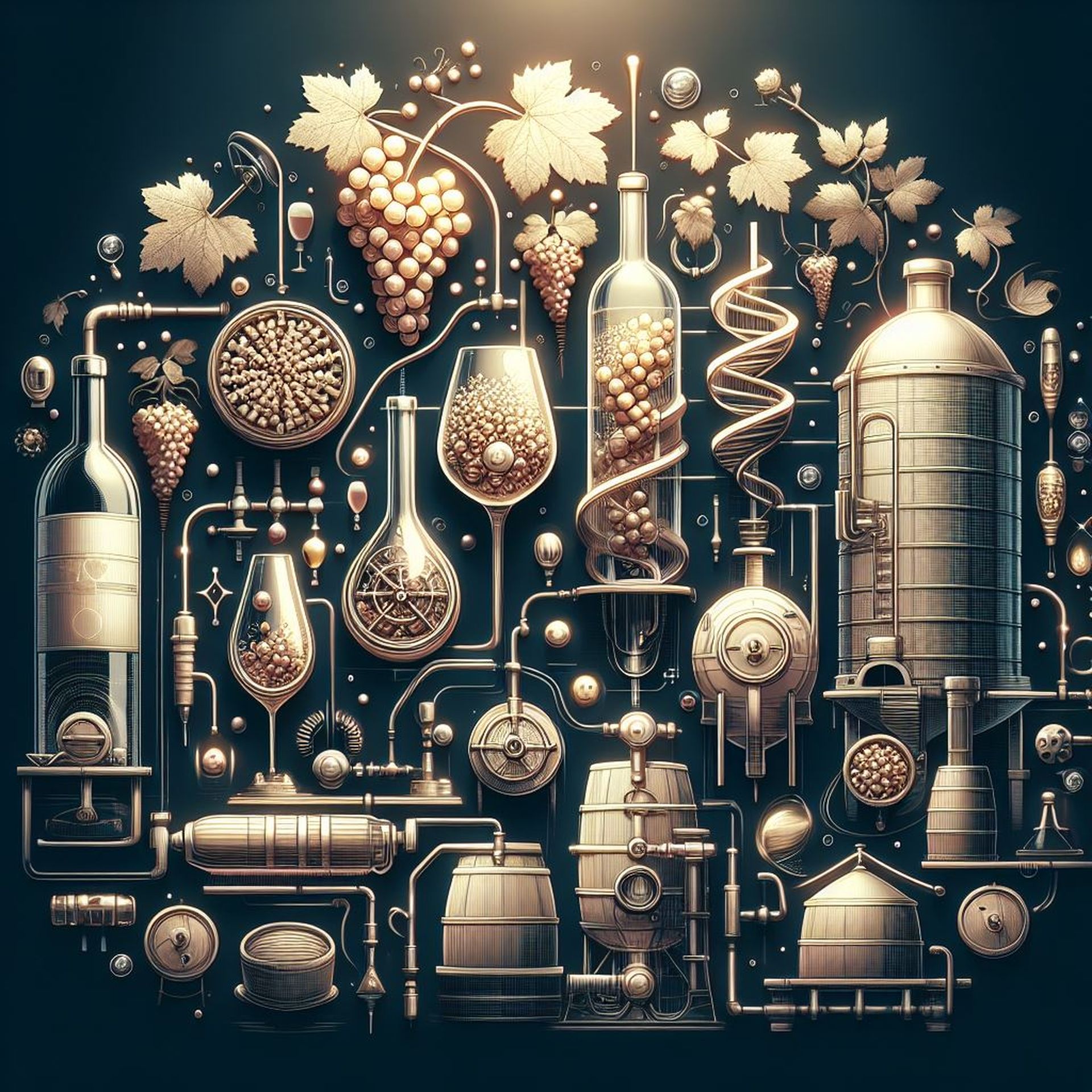
Understanding the Impact of Oak, Stainless Steel, and Other Vessels
Focusing on the winemaking process and the impact of oak, stainless steel, and other vessels on grape varieties and wine excellence is a crucial component to understanding how techniques can affect the potential of cépage. Oak barrels, for example, can impart flavors and aromas such as vanilla, spice, and toast to the wine. Stainless steel tanks, on the other hand, preserve the fresh fruit characteristics of the grapes. These vessels play a significant role in shaping the overall profile and quality of the wine.
Secret #4: The Blending Game: Unveiling the Art of Combining Cepages
Blending different grape varieties is an art that plays a crucial role in the world of wine. Complementary varieties and the synergy of blends create unique flavor profiles and enhance complexity and balance in wines. Famous blends like Bordeaux and Rhône have their secrets, showcasing the mastery of winemakers in crafting exceptional cépage wines.
Complementary Varieties and the Synergy of Blends
The art of combining complementary grape varieties in wine blends reveals the true synergy that can be achieved in the world of winemaking. When different varieties are blended together, they can create a harmonious and balanced wine that is greater than the sum of its parts. This process allows winemakers to showcase the best characteristics of each grape and create a unique flavor profile. The benefits of blending include enhanced complexity, balanced flavors, and the opportunity to create truly unique and experimental wines.
Famous Blends and Their Secrets: Bordeaux, Rhône, and Beyond
In the world of winemaking, the true artistry lies in the harmonious blending of complementary grape varieties, as exemplified by the famous blends of Bordeaux, Rhône, and beyond. Bordeaux blends, for example, combine grape varieties like Cabernet Sauvignon and Merlot to create a balanced and complex wine. Similarly, the Rhône region in France is known for its blends of Syrah, Grenache, and Mourvèdre, which result in rich and flavorful wines. These famous blends showcase the mastery of winemakers in creating wines that are greater than the sum of their parts.
Secret #5: From Vine to Bottle: Understanding Quality Factors in Cepage Selection
When it comes to producing high-quality wines, understanding the factors that influence grape quality, ripeness, and harvesting is crucial. Vineyard practices and sustainable methods play a significant role in ensuring optimal grape expression, which ultimately contributes to the overall quality of the wine. From carefully managing vineyard conditions to selecting the right time to harvest, winemakers must consider these factors in their cépage selection to produce wines that showcase the best characteristics of the grape varieties used.
Vineyard Practices and Sustainable Methods: Their Influence on Quality
Vineyard practices and sustainable methods play a crucial role in influencing the quality of grape varieties and ultimately the excellence of wine. To ensure the highest quality, winemakers employ various sustainable methods and practices in their vineyards. These include:
- Organic and biodynamic farming techniques that promote soil health and biodiversity.
- Integrated pest management strategies to minimize the use of pesticides.
- Water conservation and irrigation methods that optimize water usage.
- Canopy management techniques to enhance sun exposure and airflow, leading to healthier grapes.
Grape Ripeness and Harvesting: Crucial Steps for Optimal Expression
The crucial steps of grape ripeness and harvesting play a pivotal role in achieving optimal expression and quality in wine production. It is essential for winemakers to carefully assess the ripeness of the grapes before harvesting, as this determines the flavor profile and overall quality of the wine. Timing is crucial, as harvesting the grapes too early or too late can result in underripe or overripe flavors. The table below highlights the key factors to consider during grape ripeness and harvesting:
| Factor | Importance |
|---|---|
| Sugar content | Determines alcohol level |
| Acid levels | Balances the wine |
| Tannin ripeness | Influences structure |
Secret #6: Uncorking the Sensory Experience: Recognizing Cepage Characteristics in Wine
Recognizing cépage characteristics in wine is crucial for developing a discerning palate and deepening one’s understanding of grape varieties. Aroma and flavor profiles associated with common grape varieties can provide valuable insights into the wine’s origin and characteristics. By learning to identify cépage influence, wine enthusiasts can enhance their sensory experience and appreciate the unique qualities each grape variety brings to the wine.
Aroma and Flavor Profiles Associated with Common Grape Varieties
When exploring the world of wine, understanding the aroma and flavor profiles associated with common grape varieties is essential in recognizing the characteristics and nuances of cépage in wine. Here are some key points to consider:
- Different grape varieties have distinct aromas and tastes.
- The choice of cépage can impact the wine’s acidity, tannins, and body.
- Cépage can vary between regions and countries, resulting in diverse wine styles.
- Recognizing these profiles enhances the overall wine-drinking experience and allows for a deeper appreciation of the craftsmanship behind each bottle.
Developing Your Palate: Tips for Identifying Cepage Influence
Developing a discerning palate is crucial for wine enthusiasts who want to identify the influence of cépage in wine. By honing your tasting skills, you can better recognize the characteristics of different grape varieties and understand how they contribute to the overall flavor profile of a wine. Pay attention to the aromas, flavors, and textures in the wine, and compare them to the known characteristics of different cépages. With practice, you can become more adept at identifying cépage influence and appreciating the nuances of different wines.
Secret #7: Food Pairing Secrets: Matching Cepage to Cuisine
Now that we have explored the characteristics of different cépages and how they contribute to a wine’s flavor profile, it is time to delve into the secrets of food pairing. Understanding the flavor profiles of different cépages is crucial in creating complementary pairings that enhance both the wine and the cuisine. From classic pairings that have stood the test of time to innovative and unexpected combinations, the art of matching cépage to cuisine opens up a world of culinary possibilities.
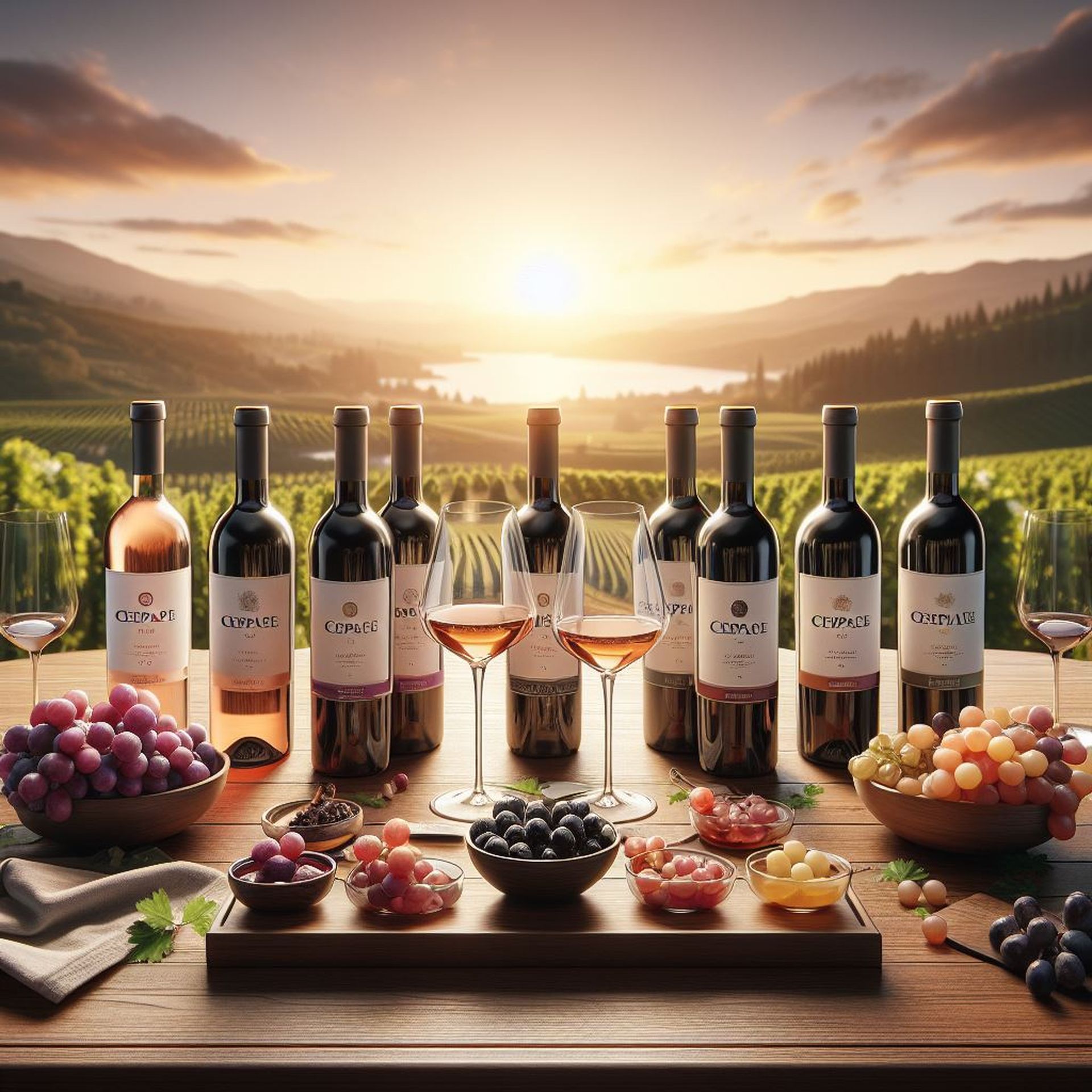
Understanding Flavor Profiles and Complementary Pairings
Understanding the flavor profiles of different grape varieties and their complementary pairings is essential for achieving wine excellence and enhancing the dining experience. Here are four key points to consider:
- Each grape variety has its own unique aromas and tastes that contribute to the overall flavor of the wine.
- Pairing certain grape varieties with specific cuisines can enhance the flavors of both the wine and the food.
- Balancing the acidity, tannins, and body of the wine with the flavors of the dish is crucial for a harmonious pairing.
- Exploring different grape varieties and their pairings can expand your wine knowledge and enhance your overall wine-drinking experience.
Exploring Traditional and Innovative Food Pairings for Different Cepages
When exploring traditional and innovative food pairings for different cépages, it becomes apparent how the unique characteristics of each grape variety can complement and elevate various cuisines. The diverse range of flavors, aromas, and textures found in different cépages opens up a world of possibilities for pairing wine with food. From the bold and structured Cabernet Sauvignon to the vibrant and aromatic Sauvignon Blanc, cépages offer a wide spectrum of options to enhance dining experiences and create harmonious flavor combinations.
Secret #8: Exploring Wine Styles and Regions Through Cepage: A World of Discovery
In the world of wine, exploring different wine styles and regions through cépage offers a fascinating journey of discovery. Each unique cépage, or grape variety, brings its own flavors and characteristics to the wine, allowing us to experience the diverse terroirs and winemaking techniques from around the globe. By understanding and appreciating cépage, we can expand our wine knowledge and explore the rich tapestry of flavors and styles that the world of wine has to offer.
Traveling the Globe: Exploring Wines Defined by Unique Cepages
Embark on a captivating journey through the world of wine as we explore the unique and diverse wines defined by their exceptional cépages.
- Discover the distinct flavors and characteristics of wines from different regions.
- Uncover the cultural heritage and terroir reflected in the choice of cépage.
- Expand your wine knowledge by exploring cépages from various countries.
- Enhance your wine tasting experience by understanding how cépage influences the wine’s profile.
Expanding Your Wine Knowledge: Resources and Tips for Further Exploration
As wine enthusiasts seek to expand their knowledge and explore the world of wine, one valuable resource for further exploration lies in understanding the influence of cépage, offering a wealth of discovery into the diverse styles and regions of this beloved beverage. By delving deeper into the concept of cépage, individuals can uncover a multitude of resources and tips that will enhance their understanding and appreciation of wine. From books and online courses to wine tastings and vineyard visits, the possibilities for expanding wine knowledge are endless. Embrace the journey of exploration and uncover the wonders of wine through cépage.
The Art and Science of Wine Blending
The process of wine blending combines the artistry and scientific precision of winemaking to create balanced and complex wines. It is a skill that takes years to master, where major winemakers use technical analysis and their senses of taste and smell to create the perfect blend. The blending process involves trial and error, as each year’s weather conditions create different grape ripening and winemaking conditions. The skill and creativity of the blender are crucial in determining the outcome of the wine.
The art and science of wine blending offer several benefits and significance. By blending different grape varieties, winemakers can make up for any shortcomings of certain grapes and create unique flavors. Blending has been practiced for centuries and allows for the creation of experimental and harmonious wines. It also enhances the complexity of flavors and contributes to a smooth and easy-to-drink wine.
The process of making blend wine involves fermenting grape varieties separately before blending, considering taste, texture, and aroma to achieve a balanced flavor profile. Wine blending is not limited to specific regions, as it is practiced worldwide. Regions like Croatia and Portugal have their blending traditions, while classic French wine blends are considered the benchmark for all wine blends. Overall, the art and science of wine blending play a crucial role in creating exceptional wines that reflect the skill and creativity of the winemaker.
Exploring Regional Influences on Cepage
Regional influences have a significant impact on the choice of cépage in winemaking, shaping the distinct character and flavor profiles found in wines from different parts of the world. The terroir, which encompasses factors such as climate, soil type, and topography, plays a crucial role in determining which grape varieties thrive in a particular region. Winemakers carefully select cépages that are well-suited to their specific terroir, as this allows them to produce wines that truly reflect the unique characteristics of the region.
To further understand the influence of regional factors on cépage selection, let’s explore some examples from different wine regions:
| Region | Grape Varieties | Flavor Profile |
|---|---|---|
| Bordeaux, France | Cabernet Sauvignon, Merlot, Cabernet Franc | Rich, structured, with black fruit and earthy notes |
| Napa Valley, USA | Cabernet Sauvignon, Chardonnay, Merlot | Full-bodied, ripe fruit, oaky |
| Barossa Valley, Australia | Shiraz, Grenache, Cabernet Sauvignon | Bold, spicy, rich, ripe fruit |
| Marlborough, New Zealand | Sauvignon Blanc, Pinot Noir | Crisp, vibrant, tropical fruit, herbaceous |
| Tuscany, Italy | Sangiovese, Cabernet Sauvignon, Merlot | Medium to full-bodied, cherry, plum, dried herbs |
As you can see, the choice of cépage in each region is influenced by the climate, soil composition, and winemaking traditions. This results in wines with distinct flavor profiles that are unique to their respective regions. Exploring wines from different regions allows wine enthusiasts to experience the diversity and complexity that cépage and regional influences bring to the world of winemaking.
The Cepage Advantage: Unveiling the Essence of Great Wine
The diversity and importance of cépage in winemaking cannot be overstated. It is through cépage that winemakers are able to create wines with unique flavor profiles, showcasing the distinct characteristics of different grape varieties. By carefully selecting and blending cépages, winemakers have the advantage of crafting wines that are greater than the sum of their parts, resulting in exceptional wines that captivate the senses and reflect the artistry of the winemaker.
Celebrating the Diversity and Importance of Cepage
Cepage serves as a bridge between winemakers and wine lovers, allowing individuals to understand and appreciate the intricacies of wine. By understanding the concept of cepage, wine enthusiasts can enhance their appreciation of different grape varieties and the unique flavors they bring to a wine. Celebrating the diversity and importance of cepage is an opportunity to explore the essence of great wine and deepen one’s knowledge and enjoyment of the beverage.
Cepage as a Bridge Between Winemaker and Wine Lover
Cepage serves as a vital link between the expertise and craftsmanship of the winemaker and the appreciation and enjoyment of wine lovers worldwide. It acts as a bridge, connecting the artistry of winemaking with the pleasure of wine drinking. Here’s how cepage fulfills this role:
- Cepage allows winemakers to showcase their skills and creativity in blending different grape varieties.
- It creates wines that reflect the unique flavors and characteristics of specific regions.
- Cepage educates wine enthusiasts, enhancing their understanding and enjoyment of different wines.
- It creates a sense of belonging, as wine lovers can explore and connect with the diverse world of cepage wines.
Understanding Cepage: Enhancing Your Wine Appreciation
Enhancing one’s appreciation of wine begins with understanding the significance and diversity of cépage, the essence behind great wines. Cépage allows winemakers to create unique and complex blends by combining different grape varieties. From Bordeaux to Italy and beyond, each region has its own traditions and practices when it comes to blending grape varieties. Exploring cépage from various regions expands wine knowledge and enhances the overall wine drinking experience, creating a sense of belonging in the world of wine.
To enhance your understanding of cepage and its pivotal role in winemaking, I encourage you to visit EncyclopediaWines.com. It’s a treasure trove of knowledge for anyone passionate about the art and science of wine.

